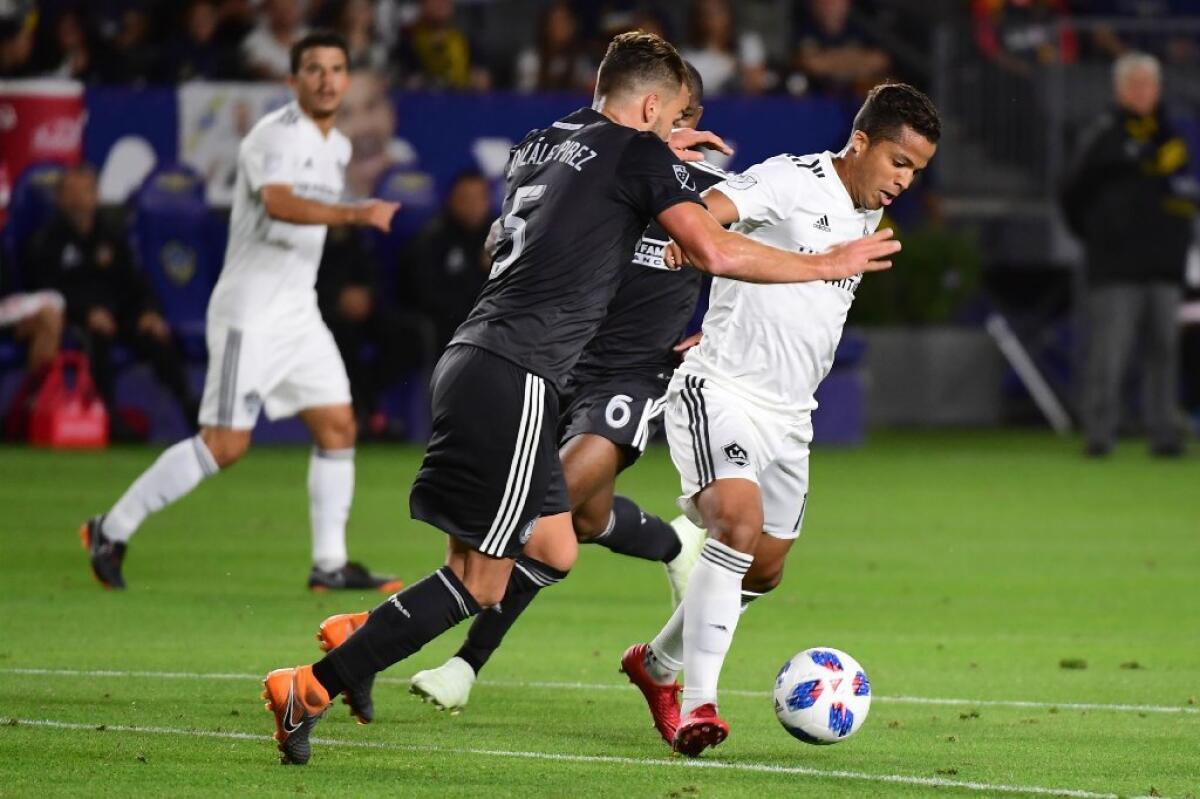As MLS salaries continue to rise, so does level of play
In Graham Zusi’s first season in MLS, he slept on the floor of a teammate’s parent’s home to make ends meet. With a salary of $34,008, he was among the lowest-paid players on the Kansas City Wizards.
In 2009, however, that almost passed for middle class in a league that had a minimum wage of $20,100.
The pay was so low that some players had to take side jobs after training and between games to stay afloat.
Nine years, 55 national team caps and three World Cup appearances later, Zusi has seen his salary rise to $782,102.27. And while that would still qualify as a rounding error in some of Europe’s biggest leagues, the jump in salaries across MLS over the past decade has had an impact in places other than players’ bank accounts.
Changes in the league’s salary structure also have made MLS more attractive to young foreign stars and older U.S. players alike, resulting in deeper rosters, more exciting games and a level of play rapidly approaching that of Mexico’s Liga MX, long the top domestic league in North and Central America.
“Inarguably we have narrowed that gap,” said John Thorrington, executive vice president for soccer operations for the expansion Los Angeles Football Club. “Look at the on-field product week in and week out and MLS is in a very different place. The types of players that are coming have a lot to do with that.
“It’s a very different world.”
The league does not comment on salaries but the MLS players union releases a list of salaries twice each season. The first 2018 survey, released Thursday, showed the number of millionaires in the league increased to 46 from 28 in 2017 while the guaranteed salary total for the league’s 669 players topped $249 million for the first time.
Only two players are listed at the league minimum salary of $54,500.

Much of that salary growth can be attributed to the league’s decision, beginning in 2015, to allow teams to spend so-called allocation money on salaries. MLS teams have been limited in what they could spend on payroll by a salary cap, one that passed $4 million for the first time this season.
Each club has long been allowed three “designated player” exemptions to the cap limits, but under the convoluted MLS salary structure, there was no mechanism for rewarding players who deserved more than the league maximum — $504,375 in 2018 — but weren’t worth DP money.
So this season each team was given access to $4 million in allocation money — some from the league and some to be paid by the club — to strengthen the middle of their rosters, and the change has been noticeable.
“It did a few things,” said J. Todd Durbin, the league’s executive vice president for competition and player relations. “Obviously it allowed teams to better retain the important players that they needed to retain. And they were able to go out and add players.
“The full value of the investment has not fully been realized.”
This season at least 94 players are getting paid between $504,000 and $1.5 million, using either the designated-player or allocation funds. Among them are South American stars Diego Rossi of LAFC and Ezequiel Barco of Atlanta United, who signed with the league as teenagers, and Galaxy forward Zlatan Ibrahimovic. It’s unlikely any of them would have come to MLS under the old salary structure.
“We have players on our roster now who had European options,” said Thorrington, whose LAFC roster has a payroll of $13.432 million, highest ever for an MLS expansion team. “That is just a testament to where this league is going. There are decisions that players are making to come to MLS where maybe in the past they wouldn’t have.”
On the field, that’s helped draw MLS closer to Liga MX. Two MLS teams — the New York Red Bulls and Toronto FC — made it to the semifinals of the CONCACAF Champions League, with each eliminating Mexican teams along the way. That’s never happened before.
And Toronto came within a penalty kick of becoming the first MLS team to win the tournament since 2000.
Liga MX does not release salary information, but there are indications MLS may be gaining ground there, too. When former Galaxy star Landon Donovan signed a one-year contract with Leon of the Liga MX this past winter, it was for approximately $3 million, which reportedly made him one of the league’s best paid players.
MLS has eight players making more than that. And in the last year two Mexican national team stars — the Galaxy’s Jonathan dos Santos and LAFC’s Carlos Vela — both turned down Liga MX offers to sign base contracts in MLS worth $2 million and $4.5 million, respectively.
“We compete in an international market. When we’re signing players we have to compete with whatever their alternatives are,” Durbin said. “If we want to stay and remain in our league, we have to pay them enough to keep them here.”
Follow Kevin Baxter on Twitter @kbaxter11







